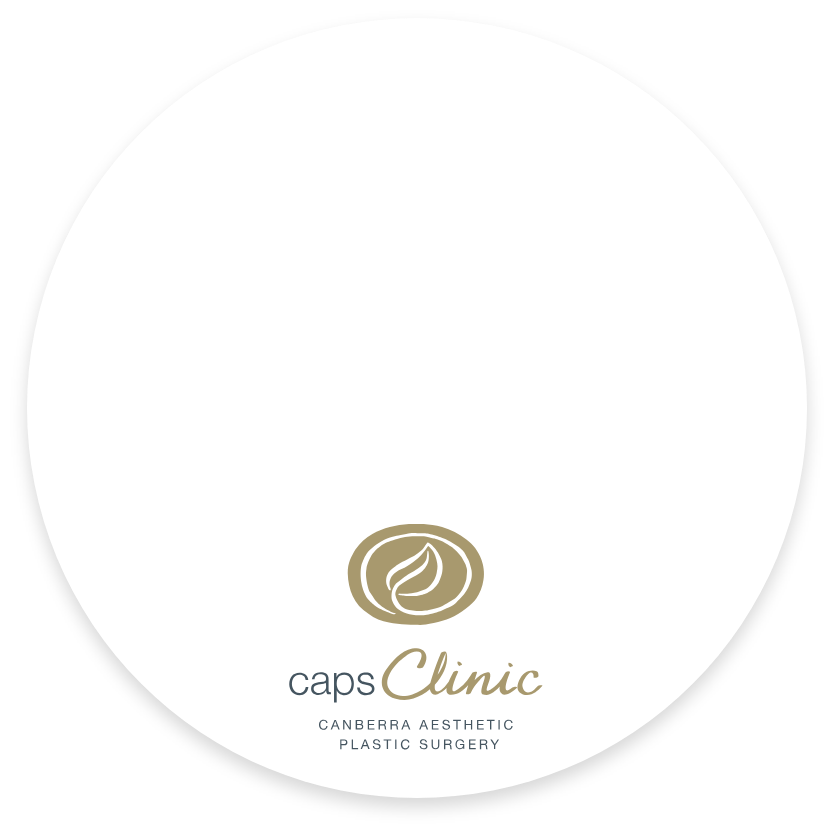
There are many reasons why women, and men, consider breast reduction. You might be experiencing the effort and pain from carrying large, pendulous breasts, which can be physically debilitating. Or want to modify the shape and position of your breasts after breastfeeding. For men, enlarged breast tissue is called gynaecomastia, and can be reduced with surgery.
We see many satisfied breast reduction patients in our clinic.
Dr Alastair Taylor (Bachelor of Medicine, Bachelor of Surgery | The Fellowship of the Royal Australasian College of Surgeons | MED0001401767)
Find out more about our treatments by selecting an option from the drop down menu.
Breast reduction is a surgical procedure that reduces the size of overly large breasts. Large breasts can cause physical pain and discomfort and other health issues. The procedure to reduce or reshape the breast involves the removal of excess tissue and elevation of the nipples, resulting in a well proportioned contour.
In some women, a breast lift, or mastopexy, may be all that is required. For other cases, reduction mammoplasty may be required, for which there are several different techniques currently practised. There will be scarring, but Dr Taylor aims to locate these scars in as inconspicuous areas as possible. Scar management is a part of the support we offer to our patients.
For men who experience gynaecomastia, which is excessive enlargement of the male breast, Dr Taylor will discuss suitable surgical options with you.
The breast reduction takes up to 4 hours under general anaesthetic and requires an overnight stay. You will require 2 weeks off work and up to 6 weeks before returning to normal activity. You will also wear a compression garment after your operation, to minimise swelling and to support your operation site as it heals.
Large breasts can lead to neck and back aches, bras leaving deep grooves in your shoulders, sweaty rashes, lack of proper posture and difficulty running or exercising. Larger breasted women may also have difficulty finding clothes that fit well. Breast reduction surgery helps to reduce these issues.
The procedure to reduce or reshape the breast involves the removal of excessive tissue and elevation of the nipples, resulting in a well proportioned contour. Generally, breasts are reduced to half their size, more or less than this could effect the blood supply that is needed to keep the nipples viable and heal wounds. The shape of the reduced breast can be tailored to be more projecting or flatter depending on body shape and age.
The operation usually incorporates liposuction to the side of the chest to reduce lateral fat and improve future bra fitment.
Breast Reduction surgery can affect the body’s ability to breastfeed successfully, however, it does not prevent the body from being able to breastfeed. Additionally, the body’s ability to breastfeed is not guaranteed. If you are concerned about the impact the surgery may have on your ability to breastfeed in the future, you are advised to either consult with a qualified medical health practitioner, such as your GP, or raise these concerns in your surgical consult with Dr Taylor.
Dr Taylor has performed thousands of breast reduction surgeries on women both before or after pregnancy. In some cases, women who had children and previously couldn’t breastfeed before their surgery were able to successfully feed babies post surgery, and likewise women who had the surgery weren’t able to.
Following breastfeeding, the breast can lose structure. A breast lift or mastopexy removes excess skin without removing breast material, remodelling the breast to create a firmer breast shape.
Women who have enjoyed breast implants in their early years sometimes decide to have them removed in their later years. It may be their implants have hardened or ruptured or perhaps their breasts have enlarged through menopause. Whatever the reason, the removal of the implants often leads to the need to reshape the breasts.
Removing the implants creates an excess of skin which will need to be excised. The remaining breast material is then reshaped.
Gynaecomastia is an excessive enlargement of the male breast and may be present in one breast (unilaterally) or in both breasts (bilaterally). Some men produce natural breast tissue which can be a difficult condition to hide. Surgery for gynaecomastia involves a surgical incision around the nipple and removal of this tissue.





ANY SURGICAL OR INVASIVE PROCEDURE CARRIES RISKS. BEFORE PROCEEDING, YOU SHOULD SEEK A SECOND OPINION FROM AN APPROPRIATELY QUALIFIED HEALTH PRACTITIONER (EG. YOUR GP).
Dr Alastair Taylor (Bachelor of Medicine, Bachelor of Surgery | The Fellowship of the Royal Australasian College of Surgeons | MED0001401767) will discuss the general and specific risks during your consultation, where you can ask questions and discuss any concerns you may have. Is it important that you have enough information to weigh up the benefits, risks and limitations of your surgery. You will also be provided with more information to take home and read, and discuss with your family or loved ones.
Risks specifically associated with breast reduction surgery may include:
Some general risks and complications of surgery may include:
Your breast reduction surgery will be performed at our private hospital, Sole’vita Surgery, a licensed medical hospital accredited under the National Safety and Quality Health Service (NSQHS) Standards. Sole’ vita Surgery is part of The CAPS Clinic, with all services conveniently based in the one location in Deakin, Canberra. There may be the option to have this surgery performed at National Capital Hospital.
Our facilities include modern surgical theatres, sterilisation services and recovery areas. Our overnight rooms feature flexible privacy glass-panelling and a personal ensuite.
All of the Sole’ vita team are fully qualified and registered medical personnel, with no more than 5 patients staying at once, our patient-to-nursing-care ratio is the best in Australia.
Dr Alastair Taylor (Bachelor of Medicine, Bachelor of Surgery | The Fellowship of the Royal Australasian College of Surgeons | Provider No. MED1401767) is a highly qualified Specialist Plastic & Reconstructive Surgeon. Learn more about Dr Taylor.
Dr Taylor leads a dedicated team of qualified health care professionals, including anaesthetic staff and nurses, who work in the Sole’vita Surgery private hospital. His team have built a reputation for quality and are committed to achieving results for our clients whilst providing personalised care, with your safety, privacy and comfort at the forefront of all work.
In most cases, breast reduction surgery is deemed a Medicare rebatable procedure due to the level of discomfort that back and shoulder pain heavier breasts can cause. Dr Taylor can only allocate a rebatable item number to the surgery if you meet the criteria. If this is the case you will be able to claim some of the surgery back from Medicare and your health fund as long as the health fund coverage includes plastic and reconstructive surgery.
It should be noted however this procedure has now been highlighted by the health funds as a potential ‘cosmetic’ procedure and requires Dr Taylor to provide clinical evidence to the health funds to determine your eligibility.
Fees include Dr Taylor Surgeons fee, Anaesthetist fee, Theatre and the Overnight Stay in Hospital costs, starting from $13,000.
To receive a formal quote you are required to have a consultation with Dr Taylor. The quote for the cost of your surgery is valid for 3 months. Some fees may not be included in this quote, including medications, pathology, physiotherapy and costs arising from any complications. Further information will be provided to you during your consultation.
Dr Taylor’s fee includes:
To help you prepare for your surgery and enhance your recovery, we offer you a pre-surgery program to start 4 to 6 weeks prior to your surgery. This includes taking a multivitamin to aid recovery and get you back on your feet faster. We also recommend an effective herbal medication to reduce the bruising and swelling associated with your surgery. You will also need to stop certain medications leading up to your surgery and we recommend ceasing smoking six weeks prior.
Planning for your surgery and your recovery in advance is vital. Understanding what you can and cannot do will ensure you are not put in a position where you put yourself or the success of your surgery at risk. All this will depend on your personal situation. Dr Taylor insists you refrain from any major or minor physical duties and take two weeks off work. You will be provided with a discreet medical certificate to accommodate any time required off work.
On discharge from Sole’vita Surgery we recommend:
Dr Taylor recommends treatments with Healite LED Light technology pre and post surgery to enhance your healing – ask our Cosmetic Consultants for more information during your personal consultation.
After your operation, you will have dressings in place and may have drains, which are removed on the day of discharge. You will also be placed in a very tight fitting compression garment. This garment is worn 24 hours a day (excluding showering) for the first two weeks and then during the day for another 4 weeks.
You will stay overnight in our Sole’vita Surgery private hospital (or National Capital Hospital or John James Hospital if your surgery is performed there). Dr Taylor will check on your recovery the next day, and our nursing staff will assist with your discharge, including wound care and management of your dressings, prescriptions for medications, and follow up appointments.
Bruising and swelling from the surgery is to be expected, and there will be discomfort. Taking regular oral pain medication can assist you to be more comfortable, and steps are taken to reduce bruising and swelling.
You are encouraged to take 2 weeks off work and plan not to be back to normal routine and activity for at least 6 weeks.
One week after your surgery, you will come to Sole’vita Surgery to have your sutures removed and your wounds checked by one of our nurses. You will have follow up appointments with Dr Taylor at both the 6 week and 6 month stage of your journey.